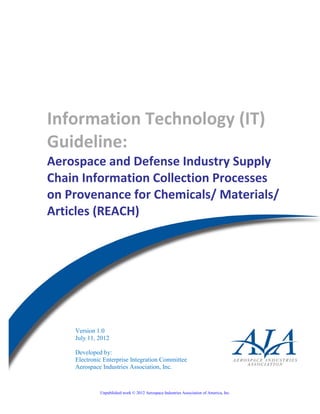This document provides a framework and scenario for understanding the European Union's REACH regulation, which addresses the registration, evaluation, authorization and restriction of chemicals. It outlines a reference model and example scenario for tracking substances of very high concern from design through delivery of an article to an EU customer. The scenario involves a US vehicle manufacturer using EU-sourced lead batteries that contain substances subject to REACH requirements. The document aims to help organizations address REACH compliance by identifying relevant processes and guidelines.






















